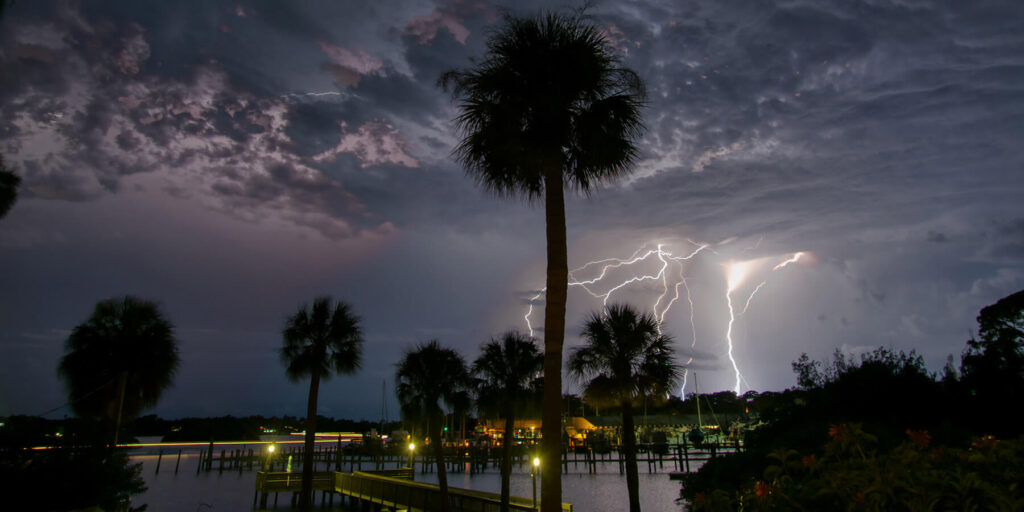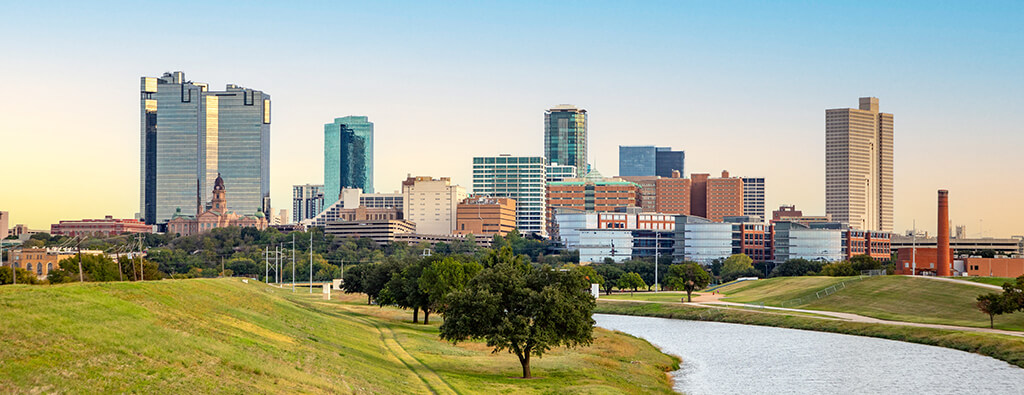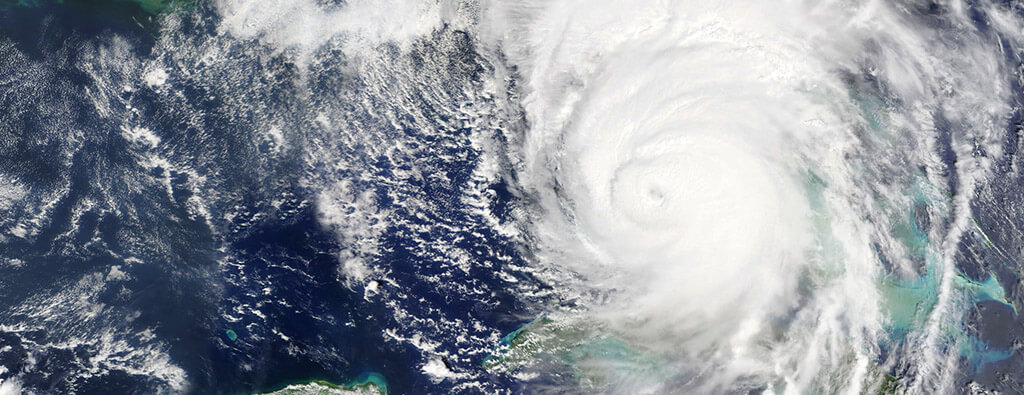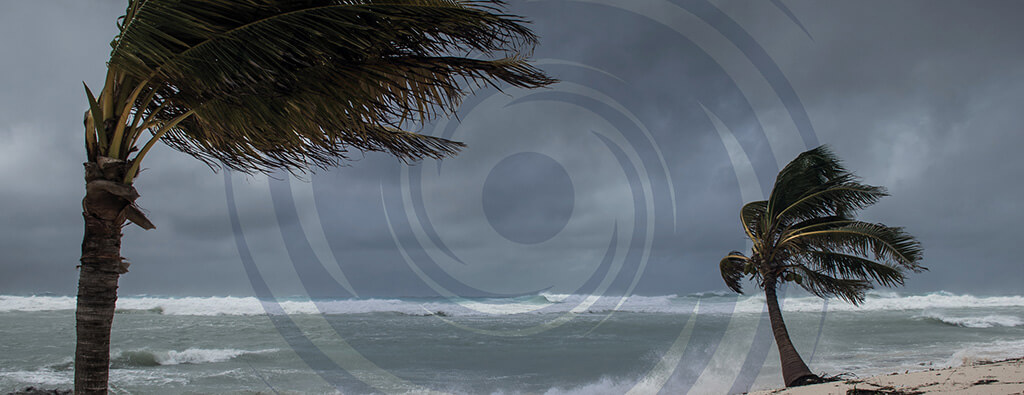Barry might sound harmless, but in 2025, it could be the name of a life-threatening storm.
Both Tropical Storm Barry and Hurricane Barry are on the World Meteorological Organization’s (WMO) official list of names for the upcoming Atlantic hurricane season. If conditions align, this name could be tied to a powerful, real-world system with serious impacts.
While we can’t predict what the 2025 season will bring, this article takes a closer look at the story behind the name Barry, including where it comes from, how storm names are chosen, and what it means when a name like this appears on the list.
Understanding the naming process is one more way to stay informed and ready for whatever the season holds.
How Tropical Storms Get Their Names
Have you ever wondered how a storm gets its name? It’s not random. The World Meteorological Organization (WMO) maintains lists of names for tropical cyclones in different basins, including the Atlantic. Naming helps track individual storms, which is important for forecasts and public communication.
For the Atlantic basin, there’s a list of 21 names used each year, skipping Q, U, X, Y, and Z. The first tropical storm of the season gets the name starting with ‘A’, the second ‘B’, and so on, alphabetically. These lists cycle every six years. So, the list used in 2025 will be used again in 2031, unless names are retired.
The name “Barry” is the second name on the Atlantic list for 2025. This means that if the second tropical storm of the 2025 hurricane season develops, it will be named Barry.
Names are retired only if a storm is particularly deadly or costly. This prevents confusion with past events and out of respect for victims. Names like Katrina, Sandy, and Maria have been retired. The name Barry has been used before, and while not retired, past storms with this name were still significant.
Notable Storms Named Barry
Looking back at previous storms named Barry gives us insight into the potential dangers a future system could bring. While no two storms are identical, historical events highlight common threats associated with this name.
One significant storm was Tropical Storm Barry in 2019. This system formed in the Gulf, strengthened briefly into a Category 1 hurricane before making landfall as a tropical storm in Louisiana. Barry in 2019 wasn’t known for extreme winds, but its slow movement was a major problem.
It delivered tremendous amounts of rain across Louisiana, Mississippi, and Arkansas. Many areas saw over 10-15 inches of rain, causing widespread freshwater flooding that affected homes and infrastructure, well away from the coast. The storm also brought a significant storm surge to coastal Louisiana.
Earlier instances of the name Barry also carried risks. For example, Tropical Storm Barry in 2013 primarily affected Florida, bringing heavy rain and causing localized flooding. While less impactful than the 2019 storm, it served as another reminder that even relatively weaker systems can disrupt daily life and cause damage.
These past storms named Barry all have a recurring theme: the significant threat of water. Whether from heavy rainfall or storm surge, past Barry’s have shown that inland and coastal flooding are major concerns. This historical context is crucial when preparing for a future Tropical Storm Barry or Hurricane Barry.
Potential Impacts of Tropical Storm Barry
Should a system strengthen into Tropical Storm Barry, the primary threat often comes from water.
Tropical storms can be slow-moving, dumping tremendous amounts of rain over several hours or even days. This leads to widespread flash flooding and river flooding, often far inland from where the storm makes landfall.
Even at tropical storm strength, winds can cause damage. Gusts can bring down trees and power lines, leading to power outages. Lighter structures, like sheds or carports, are vulnerable.
What Changes if it Becomes Hurricane Barry?
If Tropical Storm Barry were to form and strengthen and its winds reached 74 mph, it would become Hurricane Barry.
The most obvious increase in danger comes from wind. Hurricane-force winds can cause major structural damage to buildings, tear off roofs, shatter windows, and create large areas of debris. Power outages become more widespread and potentially longer lasting.
Storm surge also becomes a much more serious threat with a hurricane. Higher winds push more water ashore, leading to deeper inundation over a wider area. This is particularly dangerous in low-lying coastal regions. Storm surge is often the deadliest component of a hurricane.
Heavy rain remains a major concern. Hurricanes, especially slower ones, still produce prolific rainfall, adding to the flood risk already amplified by storm surge in coastal areas and creating significant inland flooding dangers.
Hurricane Barry could be a complex threat combining damaging winds, life-threatening storm surge, and severe inland flooding. Preparation for Hurricane Barry involves addressing all these potential impacts.
Getting Ready Before the Storm
Preparing for Tropical Storm Barry or Hurricane Barry isn’t something you do when a storm is days away. It’s an ongoing process that starts long before a storm forms.
Develop a Plan
Know your evacuation zone (if applicable) and identify where you will go if you need to leave. This could be a friend’s/family’s house inland, a designated shelter, or a hotel.
Plan routes and have alternatives. Decide how you will communicate with family members if separated.
Build an Emergency Kit
This should contain essential supplies for several days, such as:
- Water (one gallon per person per day)
- Food (non-perishable, easy to prepare)
- Flashlights and extra batteries
- First-aid kit
- Medications (at least a 7-day supply)
- Copies of important documents (insurance papers, identification, medical records)
- Cash
- Blankets or sleeping bags
- Manual can opener
- Multi-purpose tool
- Sanitation and personal hygiene items
- Chargers for electronic devices
- Maps of the area
Secure Your Home
Some essential tips to help you prepare your home include:
- Trim trees and bushes to reduce the risk of wind damage.
- Secure windows and doors with storm shutters or plywood.
- Bring in outdoor furniture, decorations, and garbage cans.
- Consider securing or reinforcing garage doors, which are vulnerable to high winds.
Stay Informed
Know how you will receive alerts and warnings (local radio, TV, NOAA Weather Radio, smartphone apps).
Review Insurance
Check your homeowner’s or renter’s insurance policy. Understand what is covered (wind vs. flood) and what deductibles apply.
Consider flood insurance, as standard policies often don’t cover it. Do this well before a storm is on the horizon, as there is typically a waiting period for new coverage.
Make Copies of Documents
Keep copies of insurance policies, identification, property deeds, and other important papers in a safe, accessible place or digitally.
Taking these steps now makes facing a potential threat like Tropical Storm Barry or Hurricane Barry far less stressful and significantly safer.
Watching for Tropical Storm or Hurricane Barry
Using names like Tropical Storm Barry or Hurricane Barry helps us visualize the threat and reinforce the importance of readiness.
Develop your plan, build your kit, secure your property, and stay informed. Understanding the distinct dangers posed by tropical storms and hurricanes allows you to tailor your preparations effectively.
By taking proactive steps today, you protect yourself, your family, and your property, ensuring you are ready for whatever the 2025 hurricane season, or any future season, may bring.
Visit our Hurricane Resource Center to access resources to prepare for the hurricane season.
FAQs
What is the difference between a tropical storm and a hurricane?
A tropical storm has sustained winds between 39 mph and 73 mph. It gets a name at this stage.
A hurricane has sustained winds of 74 mph or higher and is categorized based on wind speed (Category 1-5). Hurricanes bring more significant wind and storm surge risks than tropical storms.
How are tropical storm and hurricane names chosen?
Names come from a list maintained by the World Meteorological Organization (WMO). The lists for the Atlantic basin cycle every six years.
Names associated with particularly devastating storms are retired permanently out of sensitivity and for historical clarity.
Have there been previous storms named Barry?
Yes, the name Barry has been used before on the rotating list.
Notable past storms include Tropical Storm Barry in 2019, which caused significant rainfall and flooding along the Gulf Coast, and Tropical Storm Barry in 2013, which brought heavy rain to Florida.
When is hurricane season?
Atlantic hurricane season officially runs from June 1st to November 30th each year. However, storms can occasionally form outside these dates.
What are the main risks from a storm like Barry?
The primary risks are heavy rainfall leading to inland flooding, strong winds that can cause property damage and power outages, and storm surge along the coast which can inundate low-lying areas.
Should I evacuate?
Always follow evacuation orders from local officials. These orders are based on projected impacts like storm surge and your specific location’s vulnerability.
If you are in an evacuation zone, leave when advised. If you are not ordered to evacuate but feel unsafe, you can choose to relocate to a safer place inland.



